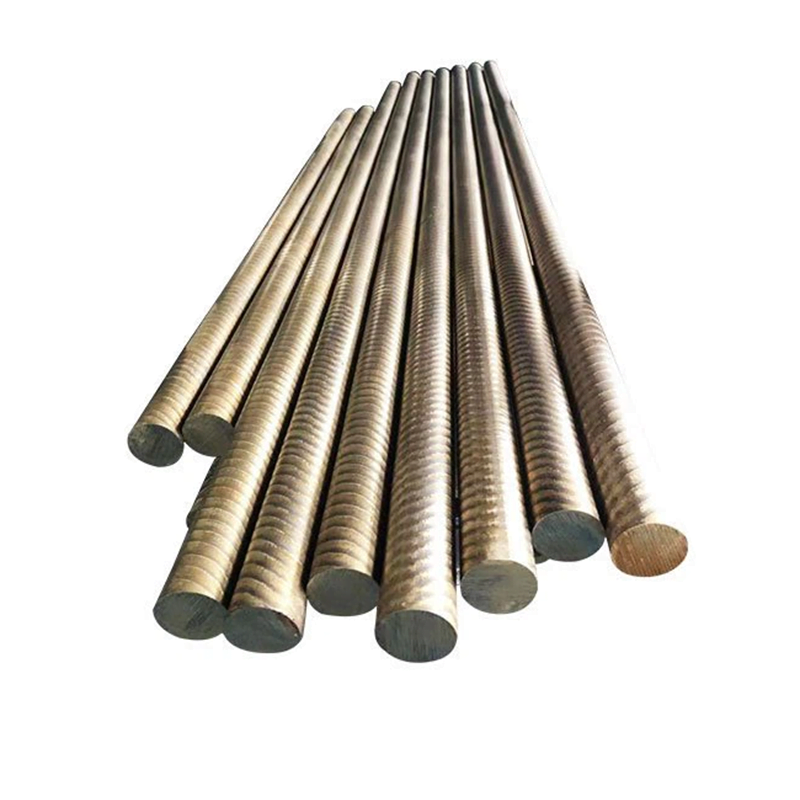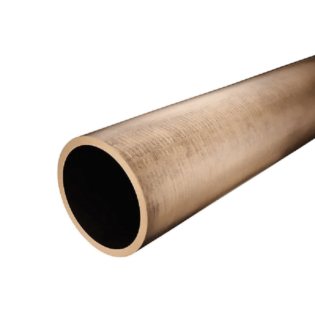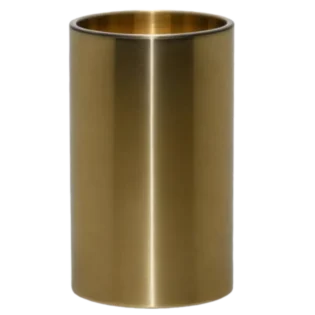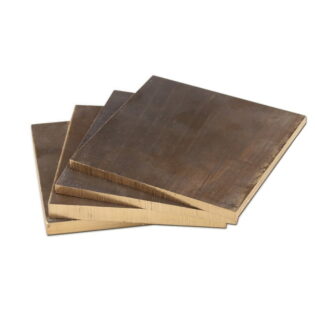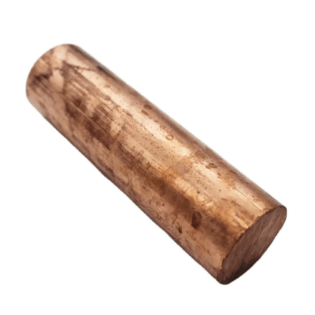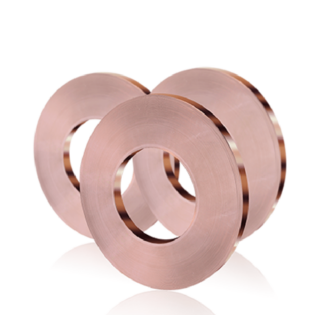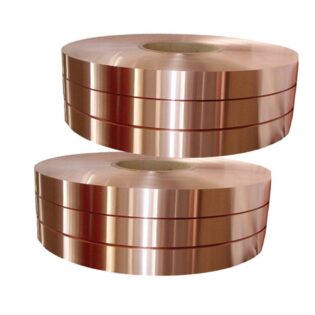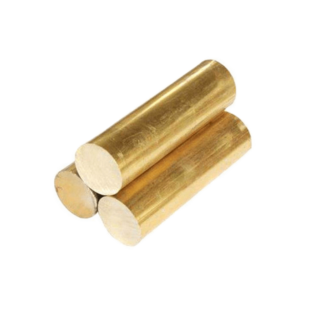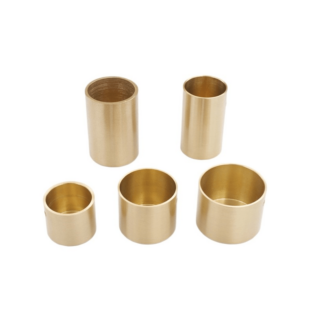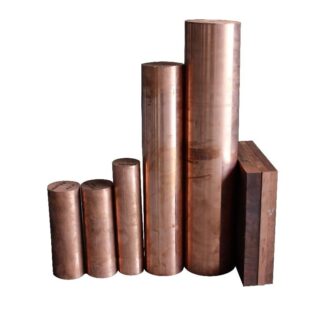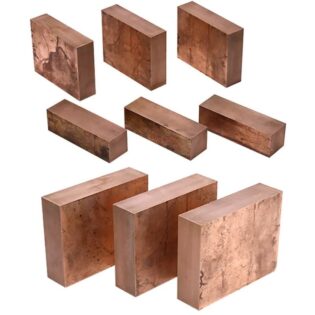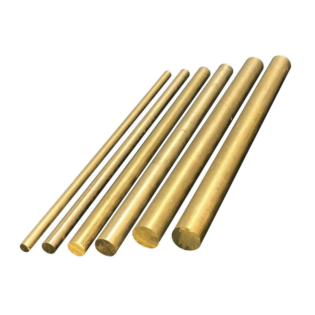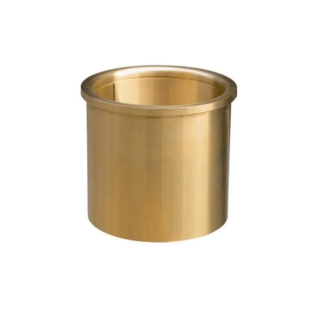Présentation du produit en bronze nickel-aluminium C63000
- Composition: Cu : 81,0 %, Al : 10,0 %, Ni : 5,0 %, Fe : 3,0 %, Mn : 1,0 %
- Propriétés mécaniques: Résistance à la traction : 900 MPa, Limite d'élasticité : 550 MPa, Allongement : 15 %, Dureté (Rockwell B) : 80
- Performance: Excellente résistance à la corrosion dans l’eau de mer et les environnements acides, avec des propriétés mécaniques constantes quelles que soient les températures.
- Applications: Largement utilisé dans les secteurs maritime (hélices, arbres), aérospatial (bagues, vannes) et industriel (roulements, engrenages).
- Shapes & Sizes: Disponible en tiges (diamètre 6 mm à 200 mm), barres, plaques (épaisseur 5 mm à 50 mm) et tubes (OD 10 mm à 150 mm).
- Normes de production : Conforme aux normes ASTM B150/B150M et SAE J461.
Présentation du produit en bronze nickel-aluminium C63000
Composition chimique
| Élément | Composition (%) |
|---|---|
| Cuivre | 81,0 |
| Aluminium (Al) | 10,0 |
| Nickel (Ni) | 5.0 |
| Fer (Fe) | 3.0 |
| Manganèse (Mn) | 1.0 |
Propriétés mécaniques
| Propriété | Valeur |
|---|---|
| Résistance à la traction | 900 MPa (130 ksi) |
| Limite d'élasticité (compensation de 0,2 %) | 550 MPa (80 ksi) |
| Élongation | 15% |
| Dureté (Rockwell B) | 80 |
Performances à différentes températures
Le bronze nickel-aluminium C63000 présente de bonnes propriétés mécaniques dans une plage de températures, adaptées aux applications dans des environnements à haute et basse température.
Applications industrielles
Le bronze nickel-aluminium C63000 est largement utilisé dans :
- Applications marines : hélices, arbres, raccords.
- Aéronautique : bagues de trains d'atterrissage, composants de valves.
- Machines industrielles : roulements, engrenages, bagues.
- Équipement de traitement chimique.
Forme et taille
Le bronze nickel-aluminium C63000 est disponible en différentes formes et tailles, notamment :
- Tiges : Diamètre allant de 6 mm à 200 mm.
- Barres : Barres carrées et rondes de différentes dimensions.
- Plaques : Épaisseur allant de 5 mm à 50 mm.
- Tubes : OD allant de 10 mm à 150 mm.
Normes de production
Le bronze nickel-aluminium C63000 est conforme aux normes internationales telles que :
- ASTM B150/B150M : spécification standard pour les tiges, barres et formes en bronze d'aluminium.
- SAE J461 : Alliages de cuivre corroyés et coulés.
Normes et notes correspondantes
| Pays/Région | Normes | Notes correspondantes |
|---|---|---|
| Etats-Unis | ASTMB150/B150M | C63000 |
| L'Europe | BS EN 12163, BS EN 12420 | CuAl10Ni5Fe4 |
| Japon | HE H3250 | C6300 |
Soudage, traitement, polissage
Le bronze nickel-aluminium C63000 peut être soudé à l'aide de diverses méthodes telles que le soudage à l'arc sous gaz tungstène (GTAW) et le soudage à l'arc sous gaz métallique (GMAW). Il convient également à l'usinage, au polissage et peut être traité thermiquement pour améliorer ses propriétés mécaniques.
Traitement thermique et traitement à froid
Le bronze nickel-aluminium C63000 peut être traité thermiquement pour améliorer sa résistance et sa dureté. Les méthodes de traitement à froid telles que le laminage à froid et l'étirage à froid peuvent améliorer ses propriétés mécaniques.
Avantages et inconvénients
| Avantages | Désavantages |
|---|---|
| Haute résistance et ténacité | Coût plus élevé par rapport aux autres alliages de bronze |
| Excellente résistance à la corrosion | Disponibilité limitée dans certaines régions |
| Bonne résistance à l'usure | Nécessite une expertise pour le soudage et le traitement |
| Convient à diverses températures et environnements |
Produits similaires et comparaison
| Type/propriété de l'alliage | Bronze-nickel-aluminium C63000 | C95400 Aluminium Bronze | Bronze aluminium C62300 |
|---|---|---|---|
| Composition (%) | Cu : 81,0, Al : 10,0, Ni : 5,0 | Cu : 85,0, Al : 11,0 | Cu : 88,0, Al : 10,0 |
| Résistance à la traction (MPa) | 900 | 500 | 600 |
| Limite d'élasticité (MPa) | 550 | 200 | 250 |
| Applications | Marine, aérospatiale, industriel | Roulements, engrenages, bagues | Vannes, raccords |
Conclusion
Le bronze nickel-aluminium C63000 est un alliage polyvalent connu pour ses propriétés mécaniques exceptionnelles, sa résistance à la corrosion et son aptitude à diverses applications industrielles. Sa composition et ses performances en font un choix privilégié dans les environnements marins, aérospatiaux et industriels où la solidité, la durabilité et la résistance à l'usure sont des facteurs critiques.
